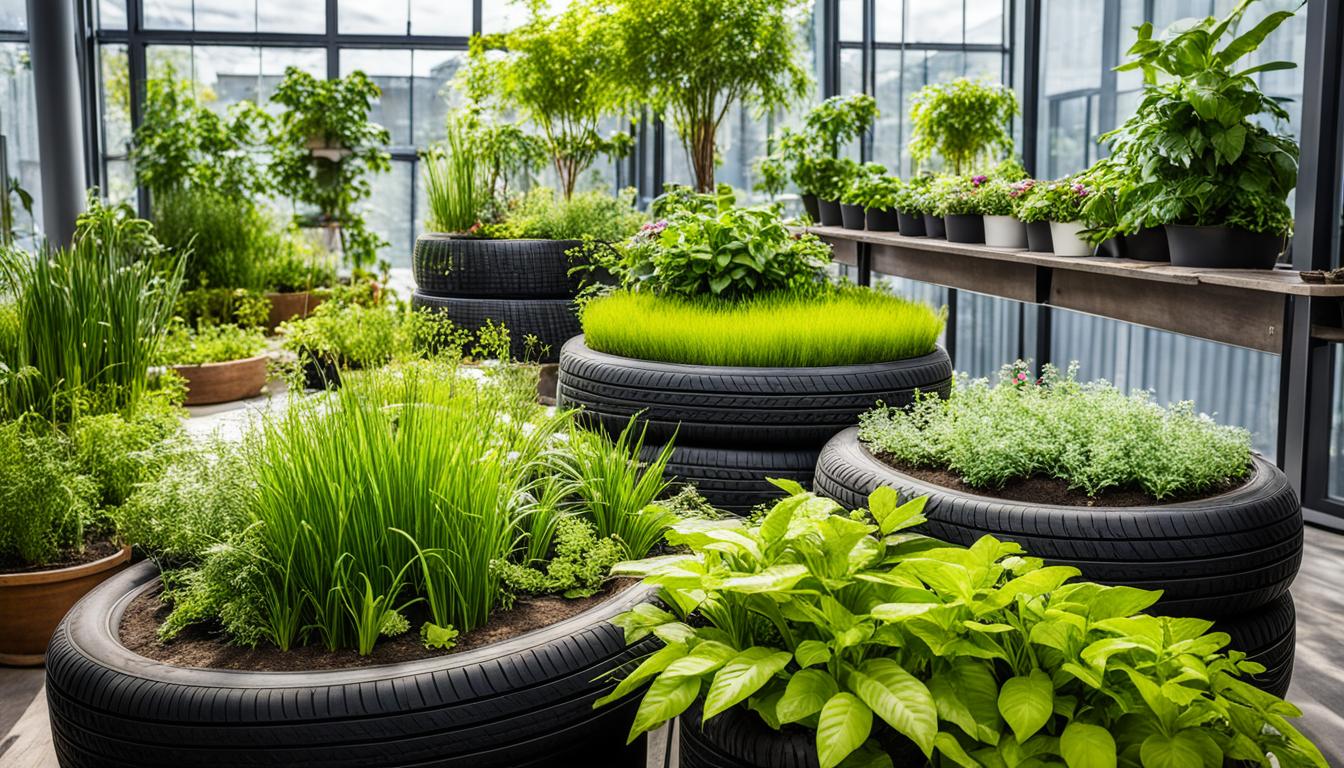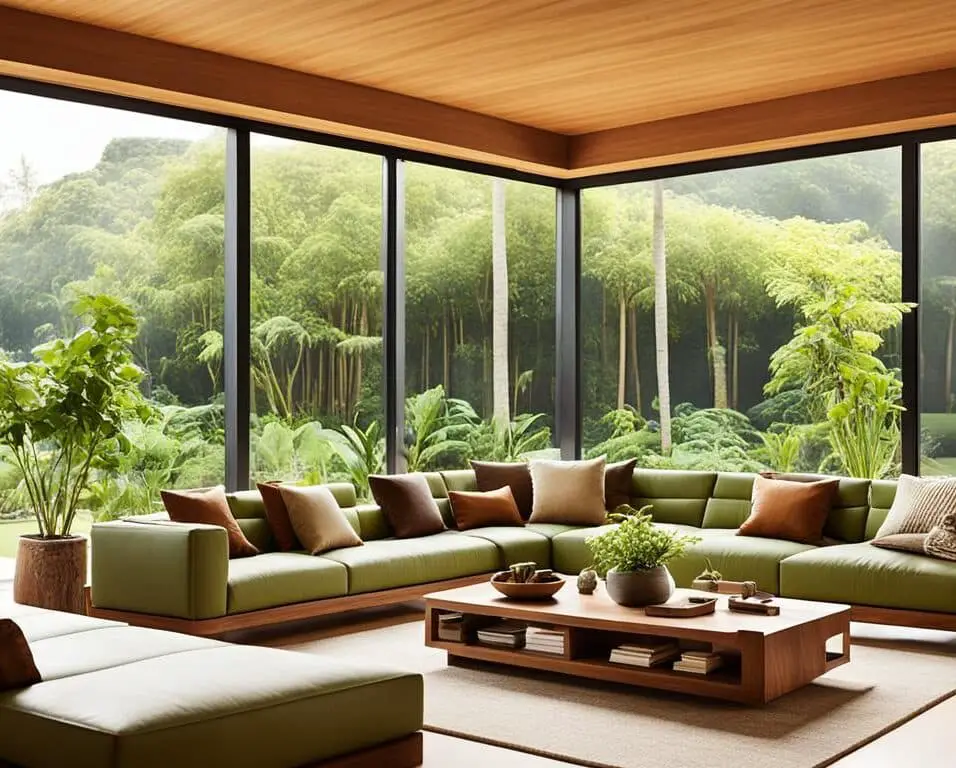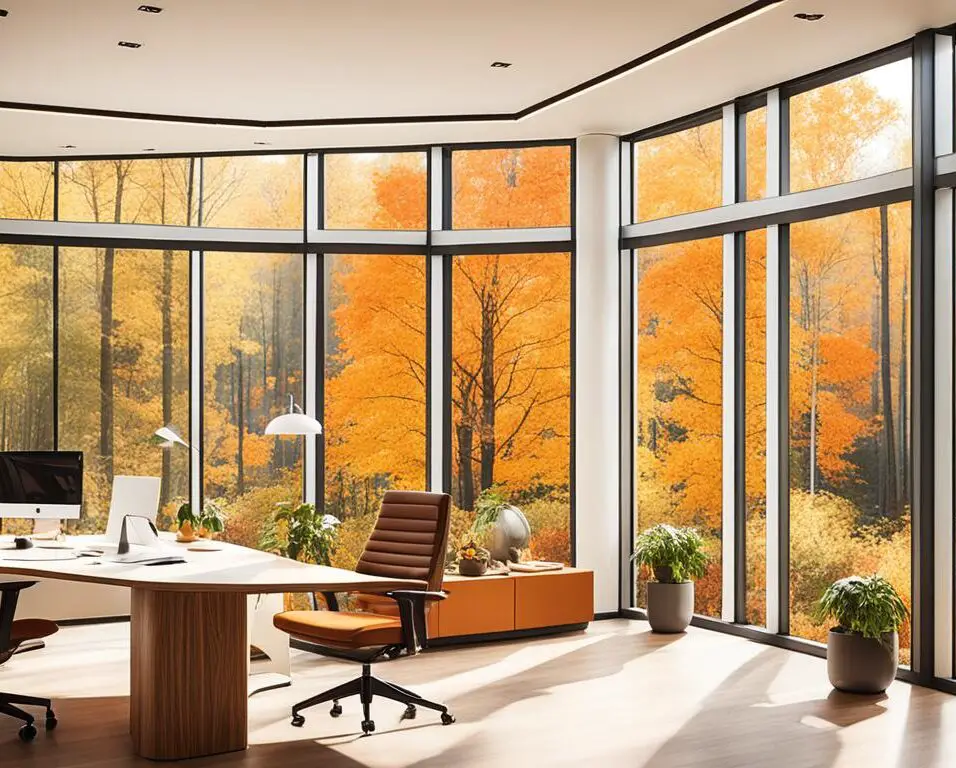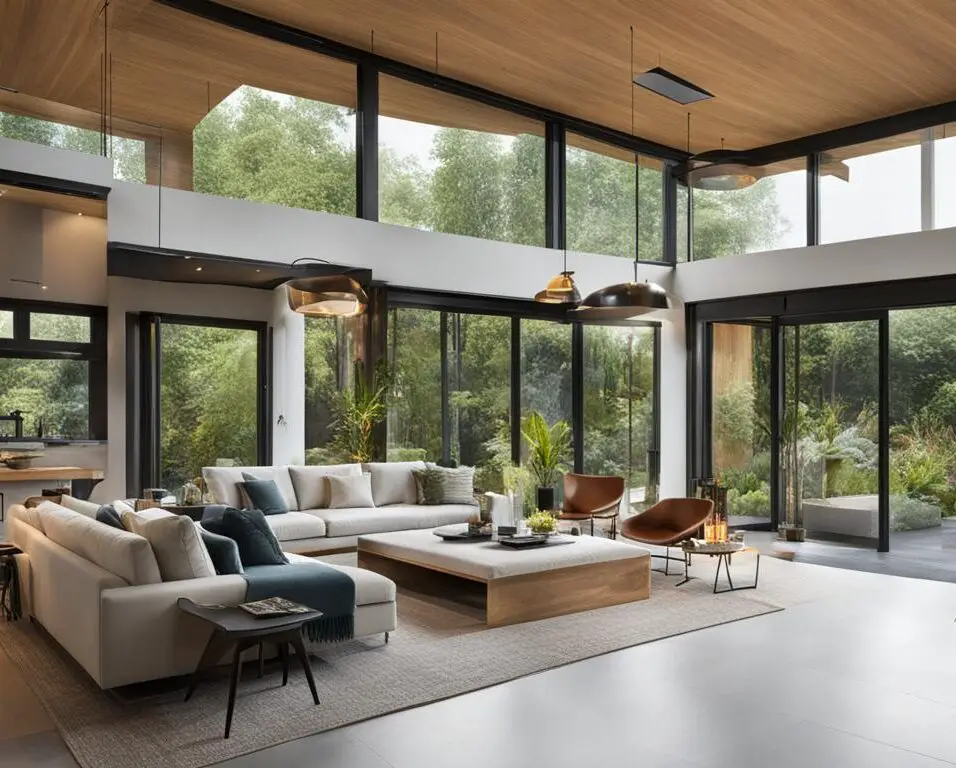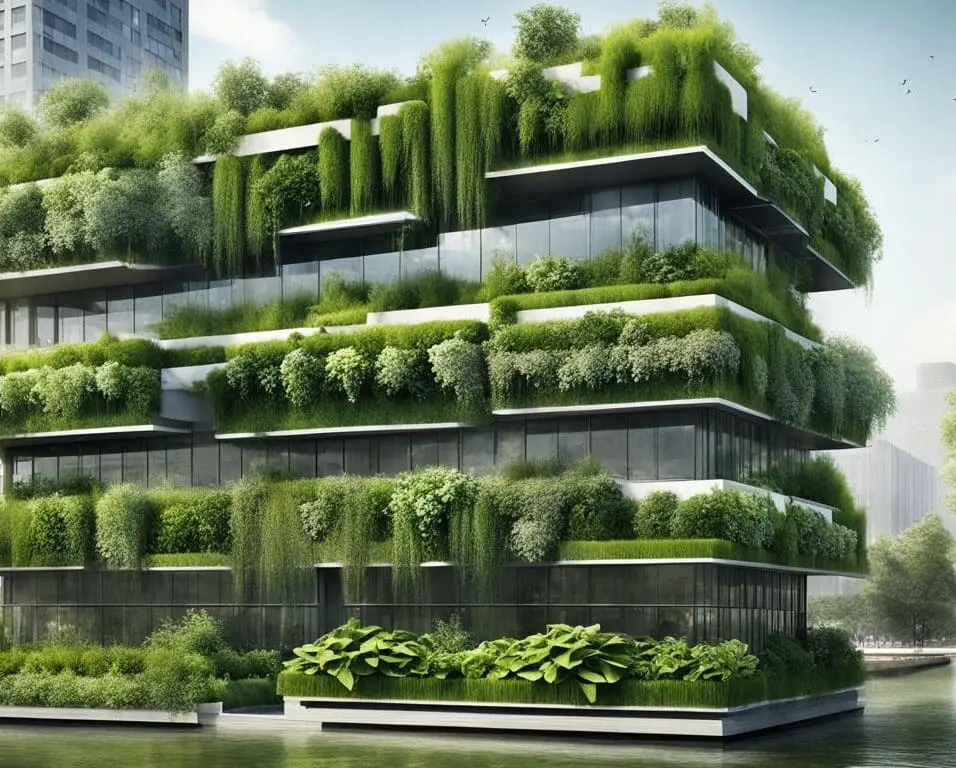Eco-Innovation: Using Recycled Materials in Biophilic Design
The construction industry is constantly evolving, seeking innovative and sustainable practices to create a greener future. One such practice gaining recognition is biophilic design, which merges elements of nature with the built environment. As a part of this growing trend, the integration of recycled materials in biophilic design has emerged as a powerful approach to enhance sustainability and promote eco-innovation in the construction industry.
Key Takeaways:
- Biophilic design embraces nature in the built environment, creating sustainable and aesthetically pleasing spaces.
- The use of recycled materials in biophilic design reduces the demand for virgin resources and minimizes waste.
- Incorporating recycled materials lowers the environmental impact of construction projects by reducing carbon emissions and energy consumption.
- Utilizing recycled materials can lead to cost savings, as they are often more affordable than new materials.
- Biophilic design with recycled materials can be applied in various disciplines, including architecture, interior design, and landscaping.
The Advantages of Biophilic Design with Recycled Materials
The use of recycled materials in biophilic design offers numerous advantages. Firstly, it contributes to sustainable construction practices by reducing the demand for virgin materials and minimizing waste.
By incorporating recycled materials, construction projects can significantly lower their environmental impact. This includes reducing carbon emissions and energy consumption.
Additionally, using recycled materials can lead to cost savings. These materials are often more affordable compared to new materials, making them a practical choice for budget-conscious projects.
Let’s take a closer look at the three key advantages of biophilic design with recycled materials:
- Contributing to sustainable construction practices
- Lowering the environmental impact
- Realizing cost savings
To illustrate these advantages, here are some examples of successful projects that have implemented biophilic design with recycled materials:
“The Treetop Residence” – This residential project incorporated reclaimed wood from old barns for flooring, wall paneling, and furniture. Not only did this choice contribute to sustainable construction, but it also added a unique rustic charm to the space.
“The Green Office Building” – Recycled glass was used for the windows and skylights in this commercial building, allowing ample natural light to flow in while reducing the need for artificial lighting. This not only created a healthier work environment but also significantly reduced energy consumption.”
Applications of Biophilic Design with Recycled Materials
Biophilic design with recycled materials offers a versatile and sustainable approach to construction and design. It can be seamlessly integrated into various areas, including architecture, interior design, and landscaping, creating harmonious spaces that prioritize environmental consciousness. By incorporating recycled materials into these disciplines, we can contribute to a greener future while simultaneously embracing innovative design solutions.
Architecture
In the realm of architecture, biophilic design with recycled materials opens up endless possibilities. Recycled materials such as reclaimed wood, recycled steel, and repurposed concrete can be used for structural elements, providing both strength and sustainability. Façades and cladding can also be adorned with recycled materials, showcasing their unique textures and colors. This not only adds visual interest but also reduces the demand for virgin materials and minimizes waste in the construction process.
Interior Design
Recycled materials play a crucial role in revolutionizing interior design. They can be incorporated into every aspect of the space, from furniture to flooring and decorative elements. For instance, recycled plastic can be transformed into stylish and functional furniture pieces, leather alternatives made from recycled materials can adorn sofas and chairs, and flooring can be crafted using reclaimed timber or recycled tiles. This infusion of sustainability enhances the aesthetics of the interior while reducing the overall environmental impact.
Landscaping
Creating sustainable outdoor spaces that blend seamlessly with the natural environment is a key focus of biophilic design with recycled materials in landscaping. Recycled materials can be artfully incorporated into landscape features such as walkways, seating areas, and retaining walls. They can also be used to construct planters and garden structures, promoting sustainability while creating a serene and inviting atmosphere. By utilizing recycled materials in landscaping, we can create a cohesive and environmentally conscious outdoor experience.
Overall, the applications of biophilic design with recycled materials in architecture, interior design, and landscaping are vast and impactful. These disciplines provide fertile ground for incorporating sustainable practices and serving as beacons of eco-innovation in the construction industry. By embracing biophilic design principles and exploring the possibilities offered by recycled materials, we can create spaces that are not only visually stunning but also aligned with our commitment to a greener future.
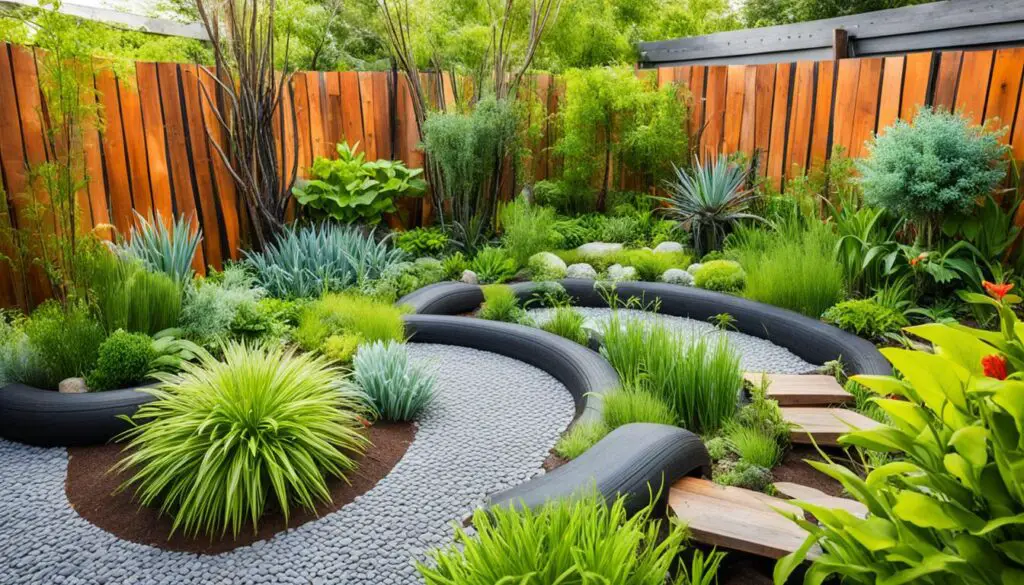
| Applications | Benefits |
|---|---|
| Architecture | 1. Reduced demand for virgin materials 2. Minimized construction waste 3. Visual interest and unique textures |
| Interior Design | 1. Sustainable and functional furniture 2. Improved aesthetics 3. Reduced environmental impact |
| Landscaping | 1. Sustainable outdoor spaces 2. Blending with natural environment 3. Cohesive and serene atmosphere |
Case Studies of Biophilic Design with Recycled Materials
When it comes to sustainable building projects, biophilic design with recycled materials has emerged as an innovative solution. By seamlessly blending the principles of biophilic design with the use of recycled materials, architects, designers, and builders have created environmentally friendly and aesthetically pleasing structures that contribute to green construction practices.
Let’s explore some inspiring case studies that showcase the successful implementation of biophilic design with recycled materials:
I. Reclaimed Wood Flooring and Paneling
One example is the Greenwood Residence project, where reclaimed wood sourced from deconstructed barns was used for flooring and paneling. This not only added a rustic charm to the interior design but also reduced the demand for new wood, promoting sustainable practices.
II. Recycled Glass Windows and Skylights
The Glasshaus development in Miami incorporated recycled glass into its windows and skylights. This not only maximized natural light penetration but also diverted glass waste from landfills. The result was a stunning display of innovative design solutions that reduced the project’s environmental impact.
III. Repurposed Steel Structural Elements
The EcoSteel project utilized repurposed steel for its structural elements, showcasing the potential of recycled materials in sustainable construction. By repurposing steel instead of using new steel, the project achieved both a reduced carbon footprint and significant cost savings.
These case studies exemplify the range of possibilities that arise from incorporating biophilic design principles with recycled materials. By adopting innovative solutions, such as the ones highlighted above, sustainable building projects can make a meaningful contribution to green construction practices.
Now, let’s take a closer look at the benefits and outcomes of these projects in the table below:
| Case Study | Sustainable Building Projects | Innovative Design Solutions | Green Construction |
|---|---|---|---|
| Greenwood Residence | ✓ | ✓ | – |
| Glasshaus | ✓ | ✓ | ✓ |
| EcoSteel | ✓ | ✓ | ✓ |
As illustrated in the table, all of these case studies demonstrate the successful integration of sustainable building practices, innovative design solutions, and green construction principles.
By showcasing these real-world projects, this section aims to inspire and motivate professionals in the construction industry to embrace biophilic design with recycled materials. It is through such eco-innovation that we can pave the way for a greener and more sustainable future.
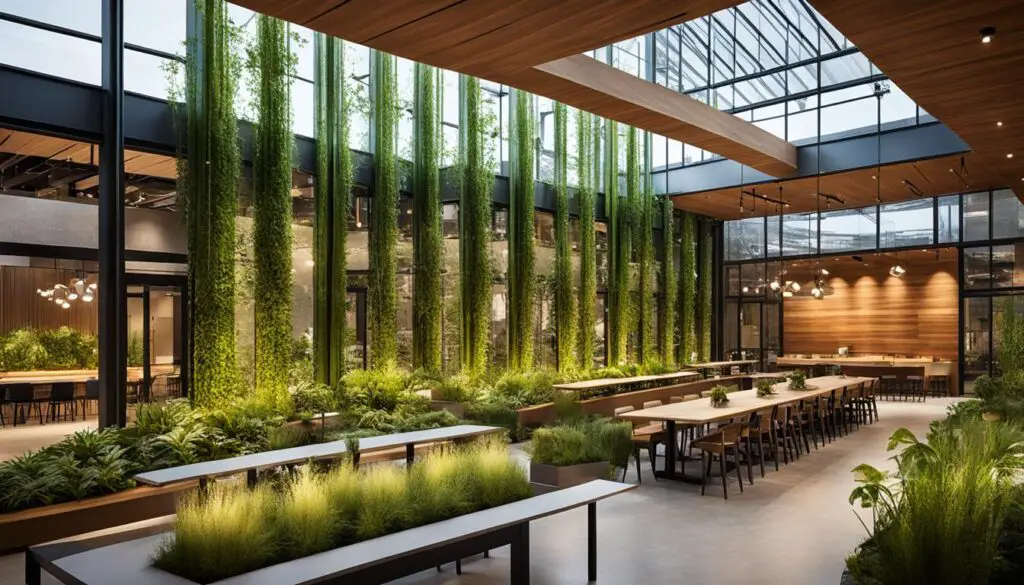
Conclusion
Biophilic design with recycled materials presents a revolutionary and sustainable approach to construction and design. By seamlessly integrating elements of nature and utilizing recycled materials, we have the opportunity to create functional, visually captivating spaces that contribute to a greener future. Throughout this article, we have explored the advantages, applications, and inspiring case studies that showcase the potential of eco-innovation in the construction industry.
The incorporation of biophilic design principles not only reduces the demand for virgin materials and minimizes waste, but it also mitigates the environmental impact of construction projects. By integrating recycled materials, we can significantly lower carbon emissions and energy consumption. Furthermore, the affordability of recycled materials enables cost savings, making sustainable construction practices more accessible and economically viable.
To fully realize the potential of biophilic design with recycled materials, it is crucial that we prioritize sustainable practices and embrace the opportunities it offers. As designers, architects, and builders, we have a responsibility to create a built environment that is in harmony with nature. By leveraging biophilic design and eco-innovation, we can propel the industry forward towards a more sustainable and environmentally conscious future.
Let us seize this moment to embrace biophilic design’s potential and make a lasting impact on the construction industry. Together, we can ensure that future generations inherit a world where the beauty of nature seamlessly blends with sustainable design, powered by the use of recycled materials.
FAQ
What is biophilic design?
Biophilic design is a design approach that incorporates elements of nature into the built environment. It seeks to create spaces that connect people with nature, providing numerous benefits for health and well-being.
What are the advantages of using recycled materials in biophilic design?
Using recycled materials in biophilic design contributes to sustainable construction practices by reducing the demand for virgin materials and minimizing waste. It also helps to lower environmental impact by reducing carbon emissions and energy consumption. Furthermore, using recycled materials can lead to cost savings as they are often more affordable than new materials.
Where can biophilic design with recycled materials be applied?
Biophilic design with recycled materials can be applied to various aspects of construction and design. It can be used in architecture for structural elements, façades, and cladding. In interior design, it can be incorporated into furniture, flooring, and decorative elements. It can also be utilized in landscaping to create sustainable outdoor spaces.
Can you provide examples of successful projects that have implemented biophilic design with recycled materials?
Yes, there are numerous sustainable building projects that have successfully integrated biophilic design principles with recycled materials. Examples include the use of reclaimed wood for flooring and paneling, recycled glass for windows and skylights, and repurposed steel for structural elements.
What is the goal of biophilic design with recycled materials?
The goal of biophilic design with recycled materials is to create functional and aesthetically pleasing spaces that contribute to a greener future. By incorporating elements of nature and utilizing recycled materials, it is possible to achieve sustainable and innovative construction and design solutions.
Source Links
- https://www.re-thinkingthefuture.com/architectural-community/a11968-architecture-trends-rapid-and-cost-effective-construction-methods/
- https://www.brainzmagazine.com/post/6-initiatives-how-hotels-lead-the-way-ascott-philippines-embracing-circular-economy
- https://hometrendhub.com/unveiling-the-future-exploring-interior-design-trends-for-2025/



